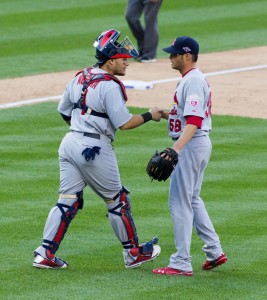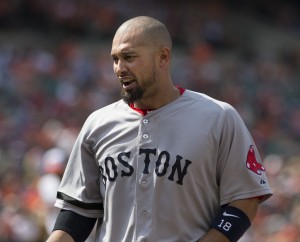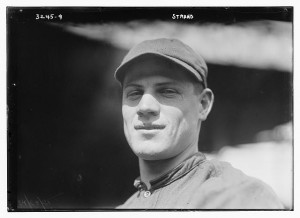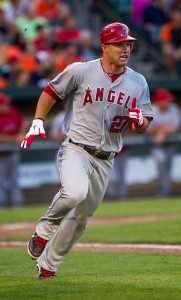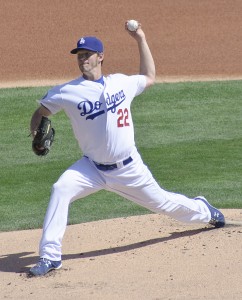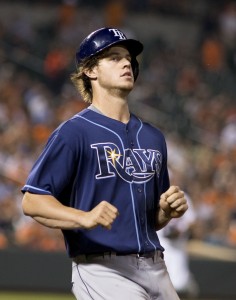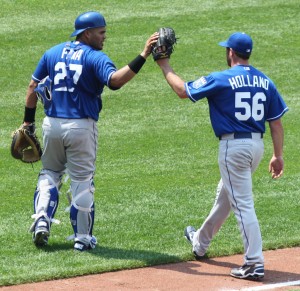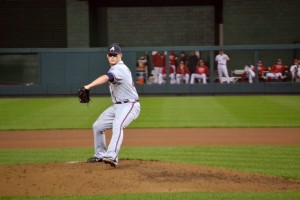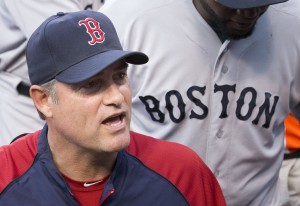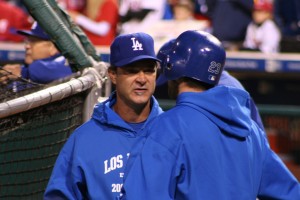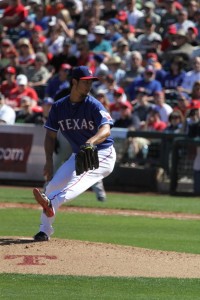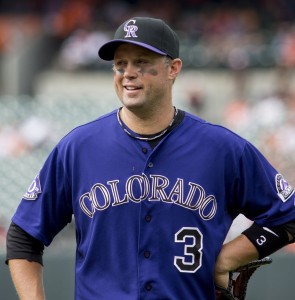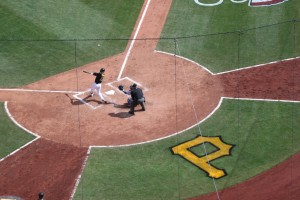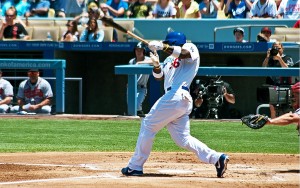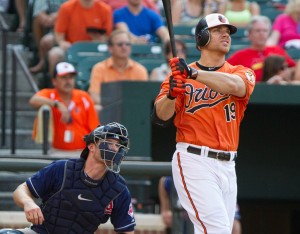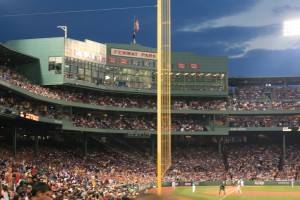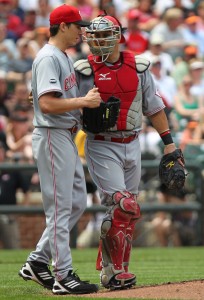There is jubilation at BBRT. Never a fan of the (expanding) Wild Card format, BBRT is pleased to see the teams with the best record in each league – the Red Sox and Cardinals, both at 97-65 – in the World Series. The last time this happened was not even in the 21st Century (1999 – Yankees/Braves). So, tomorrow night (Wednesday. 7:30 p.m.), two teams with long and rich baseball heritages – and knowledgeable, loyal and enthusiastic fan bases – will meet in the World Series for the fourth time.
BBRT anticipates a tough and exciting series, with the Red Sox winning in seven games – due to a combination of “Depth, Destiny and Home Field Advantage” (not necessarily in that order).
DEPTH
Both teams boast strong line-ups (the Red Sox with the edge in power and speed, the Cardinals with an advantage in consistency and situational hitting). Boston, however, has a few more weapons to bring in off the bench with Daniel Nava or Jonny Gomes (depending on who starts in left field), the speedy Quintin Berry and backup backstop David Ross. Plus, in Saint Louis, it appears David Ortiz will play first, making Mike Napoli available off the bench. The Cardinal’s key bench players figure to be David Descalso and, in St, Louis, either Mike Adams or Allen Craig.
The Cardinals, boasting MLB’s second-best ERA for their starting rotation (3.42) have a solid one-two punch in Adam Wainwright (19-9, 2.94 in the regular season) and rookie Michael Wacha (4-1, 2.78, nine starts). Those two have combined to go 5-1, 1.03 thus far in the 2013 post season. Still, you can’t forget that Boston won all three Verlander/Scherzer starts in the ALCS. Boston counters with the capable Jon Lester (15-8, 3.75) and Clay Bucholz (12-1, 1.74). It’s when you get to the three/four slots that depth works in favor of the Red Sox, with the experienced John Lackey (who may actually draw the game two start) and Jake Peavy having an edge versus Lance Lynn and Joe Kelly.
DESTINY
The Red Sox made the leap from last to first, with a lot of new faces and (under John Farrell) a whole new culture. They are a team of emotion – driven by clubhouse chemistry, “Boston Strong” and “Boston Beards.” The Red Sox simply believe a World Championship is their destiny – and BBRT thinks that more emotional approach may provide just a bit of an edge over the very professional and consistent confidence and performance of the Cardinals’ squad.
HOME FIELD ADVANTAGE
These two teams are very well matched and the ultimate deciding factor may prove to be home field advantage. Not only do the Red Sox get four games at home – that home field forces the opposition to play not only in front of the “Boston Nation,” but also in the shadow of the “Green Monster.” For the Cardinals’ young pitching staff – particularly the relief cadre – that big green wall may seem to be leaning right over their shoulders when on the mound. Let’s face it, playing in Fenway presents some unique challenges, and that will work in the Red Sox’ favor.
So, again, BBRT sees the Red Sox in seven, with each team grabbing one away game in the process.
KEY MATCH-UPS
Now, here are some key match-ups that BBRT will be watching.
The Red Sox’ veteran hitters against the Cardinals’ young pitching staff.
BBRT will be keeping close tabs on the battle between key Red Sox’ veteran (and very patient) hitters like David Ortiz, Dustin Pedroia, Mike Napoli and Shane Victorino and the Cardinals’ rookie post-season “ace” Michael Wacha, closer Trevor Rosenthal and, perhaps even more important, young relievers Seth Maness, Kevin Siegrist and Carlos Martinez. If the Cardinals are going to have a chance to take the Series, Wacha and the young relievers must continue their strong post season performance; and the entire pitching staff must focus on first-pitch strikes.
Yadier Molina versus Boston Base Runners.
With Boston having out-homered Saint Louis 178 to 125 in the regular season, you would expect the speed advantage would go the Cardinals. Not so. The Red Sox stole 123 bases in 2013, and were caught only 19 times. The Cardinals, on the other hand, stole just 45 bags and were nailed on 22 attempts. In the post-season, Boston has stolen 11 bases in 13 attempts, while Saint Louis has just 3 steals. The Cardinals counter the Red Sox’ dangerous running game with five-time Gold Glover Yadier Molina behind the plate. BBRT will be watching the match-up between Yadier’s arm and the speed of Jacob Ellsbury, Shane Victorino, Dustin Pedroia and likely pinch-runner Quintin Berry. Shutting down the Red Sox’ running game is particularly important, as the Cardinals work to keep the disruptive pressure off a young mound staff.
David Ortiz versus Carlos Beltran.
In David Ortiz and Carlos Beltran, the Series features two proven big-game hitters. Which of these two lives up to his billing could have a lot to do with the outcome or the series.
Allen Craig versus His Own Left Foot.
Allen Craig has been out of the lineup since Sept. 4 due to a left foot sprain. Now he’s back and, if he can shake off the rust, his bat in the middle of the Cardinals’ line up can really boost the birds. During the regular season, Craig went .315-13-97 in 134 games.
Matt Carpenter versus Dustin Pedroia.
These two second baseman are both professional hitters and critical parts of their teams’ offenses. Carpenter hit .318, with 11 home runs, 78 RBI, 126 runs and 3 steals during the regular season (leading the NL in runs, hits and doubles). Pedroia hit .301, with nine home runs, 84 RBI, 91 runs and 17 steals. Either of these players is capable of dominating in a short series and, if either does, it could significantly impact the outcome.
Michael Wacha versus the Green Monster.
A twenty-one-year-old rookie, Michael Wacha has proven his courage and composure in the post season – going 3-0, twice beating likely NL Cy Young winner Clayton Kershaw and giving up just one run in 21 innings. His first start in the World Series – in the shadow of the Green Monster and in the den (and din) of the Boston faithful – will be another test. If he passes, the Cardinals could be on their way to the championship. It’s that close.
Shane Victorino versus BBRT’s Expectations.
David Ortiz refers to Shane Victorino as “a money player.” BBRT thinks the World Series will be Victorino’s time to shine – and, in fact, recently made him my (surprise?) prediction for World Series MVP.
Be glad to hear your comments and predictions.
I Tweet baseball – @DavidBBRT

